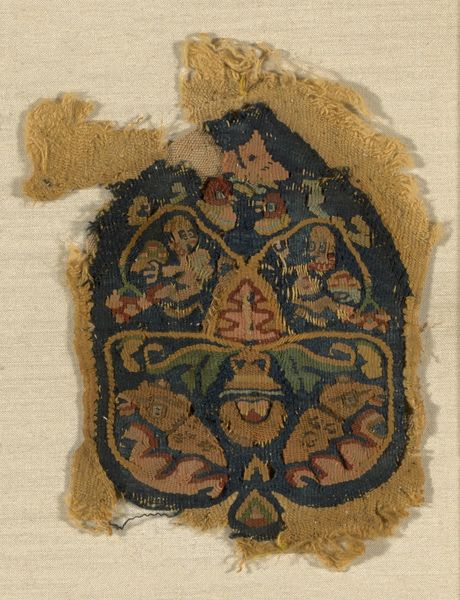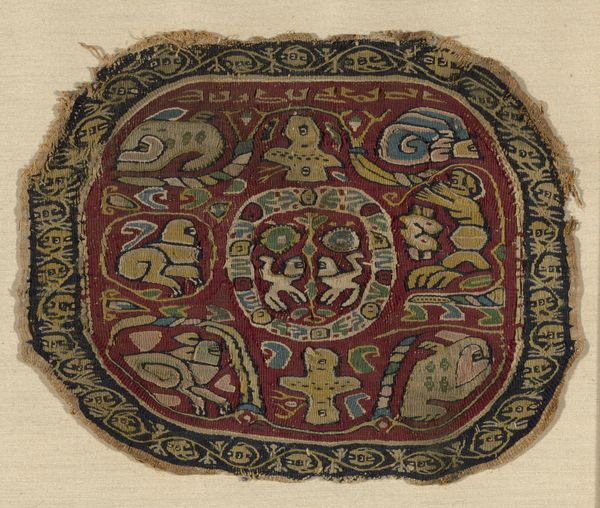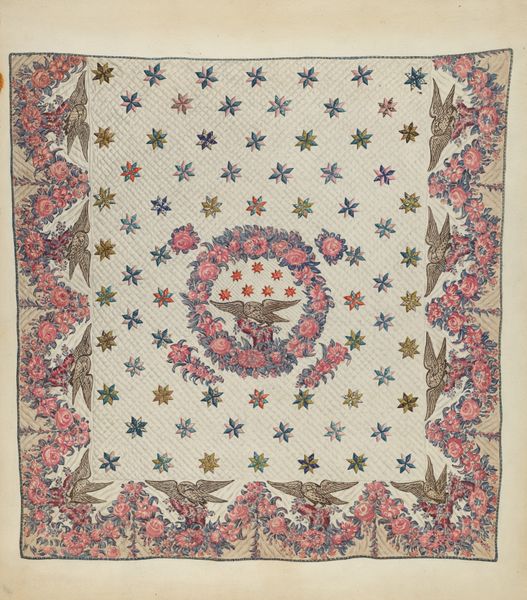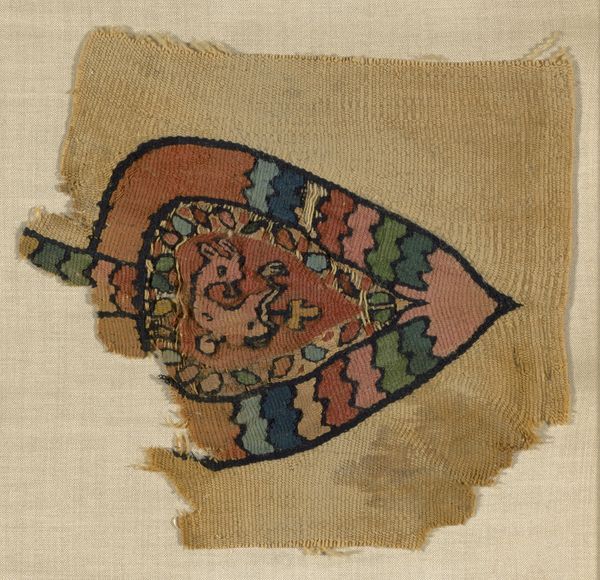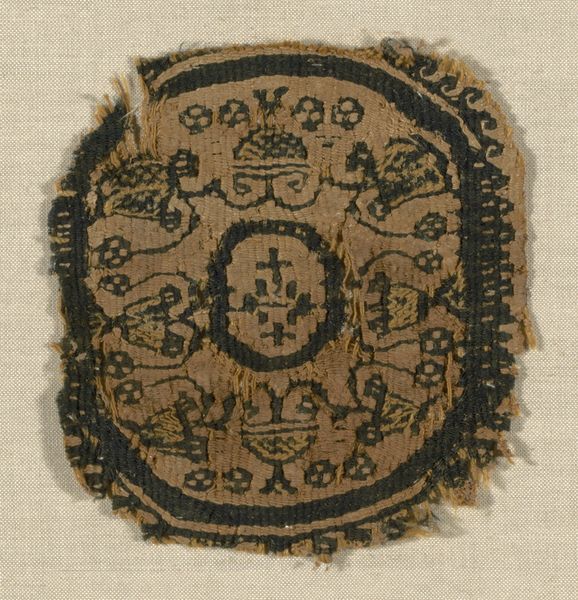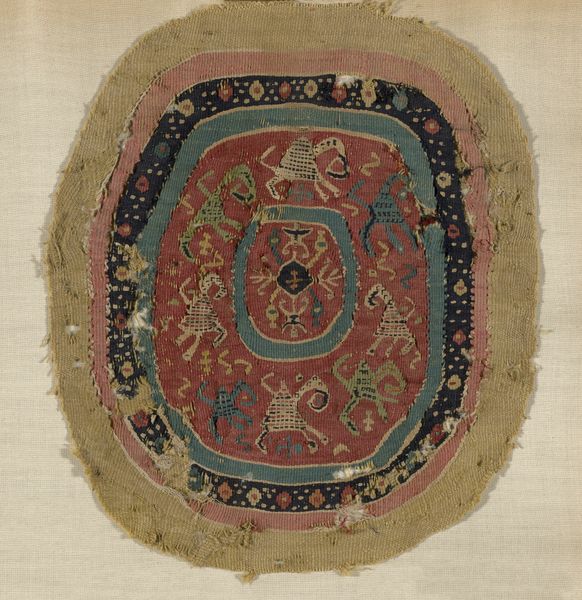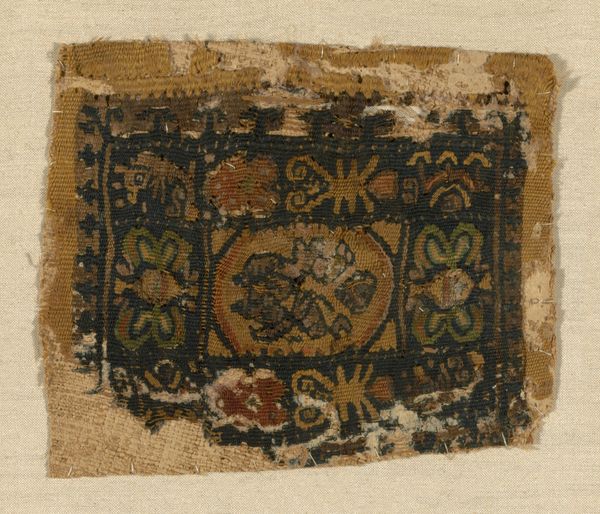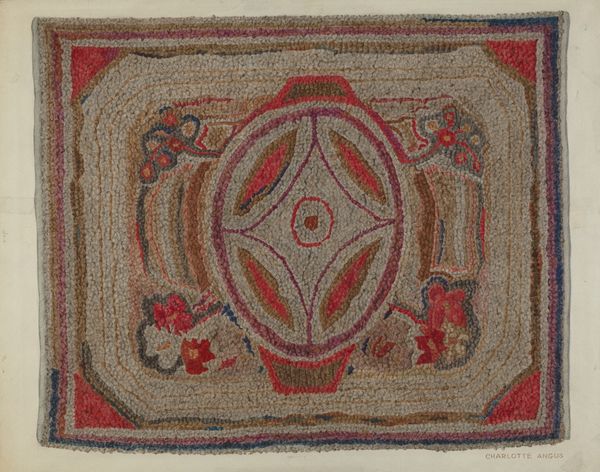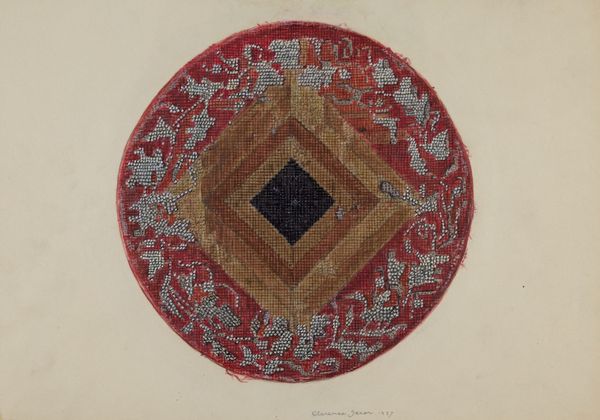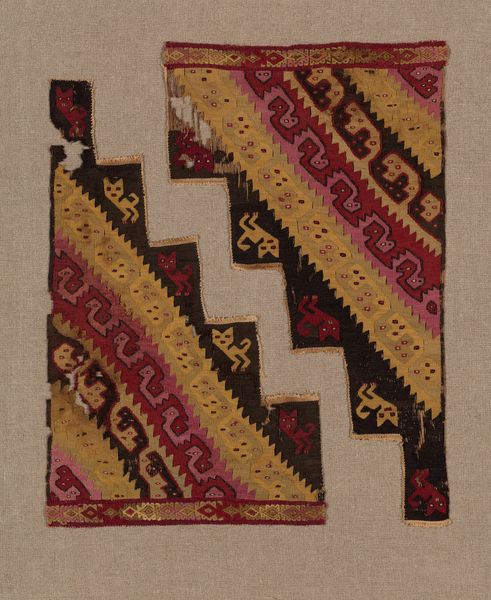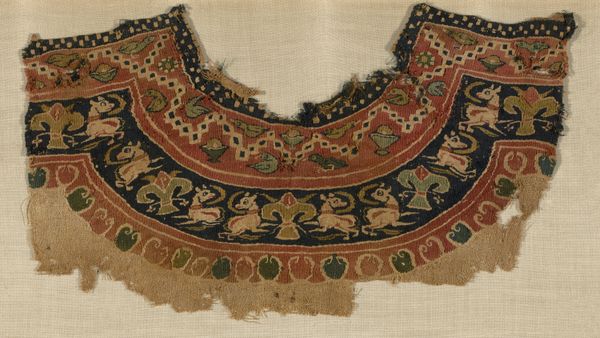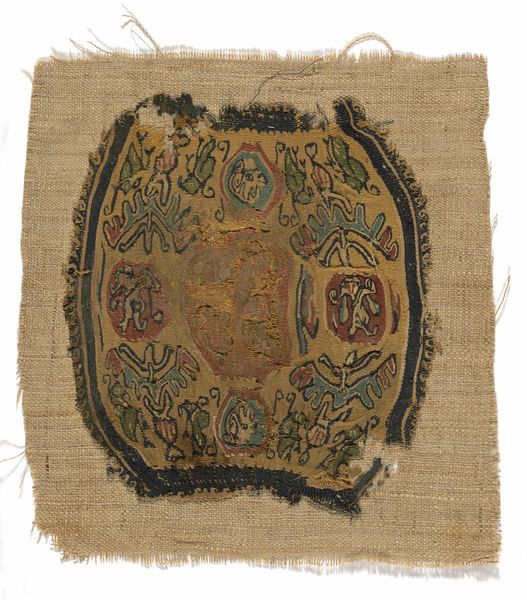
Fragment Roman period (30 B.C.– 641 A.D.)/Arab period (641–969), 6th/8th century
0:00
0:00
fibre-art, weaving, textile, wool
#
portrait
#
fibre-art
#
weaving
#
textile
#
ancient-egyptian-art
#
wool
#
figuration
#
egypt
#
ancient-mediterranean
#
line
#
islamic-art
Dimensions: 11.4 cm (4 1/2 in.) diameter
Copyright: Public Domain
This textile fragment, which lacks a precise date, was woven by a Coptic artisan. The Copts, an ethno-religious group indigenous to North Africa, produced vibrant textiles that reflected their unique blend of Egyptian, Greek, and Roman cultural influences. The fragment shows a figure carrying what appears to be a basket or a vessel, set against a backdrop of stylized floral motifs. Consider the cultural context of the Copts; their textiles often served both utilitarian and symbolic purposes, adorning clothing, furniture, and religious spaces. Textiles were not just materials; they were carriers of identity, faith, and cultural memory. The fragment invites us to contemplate the lives and experiences of the Coptic artisans. As you stand here, consider how this modest fragment reflects the resilience and creativity of a community navigating complex social, political, and religious landscapes.
